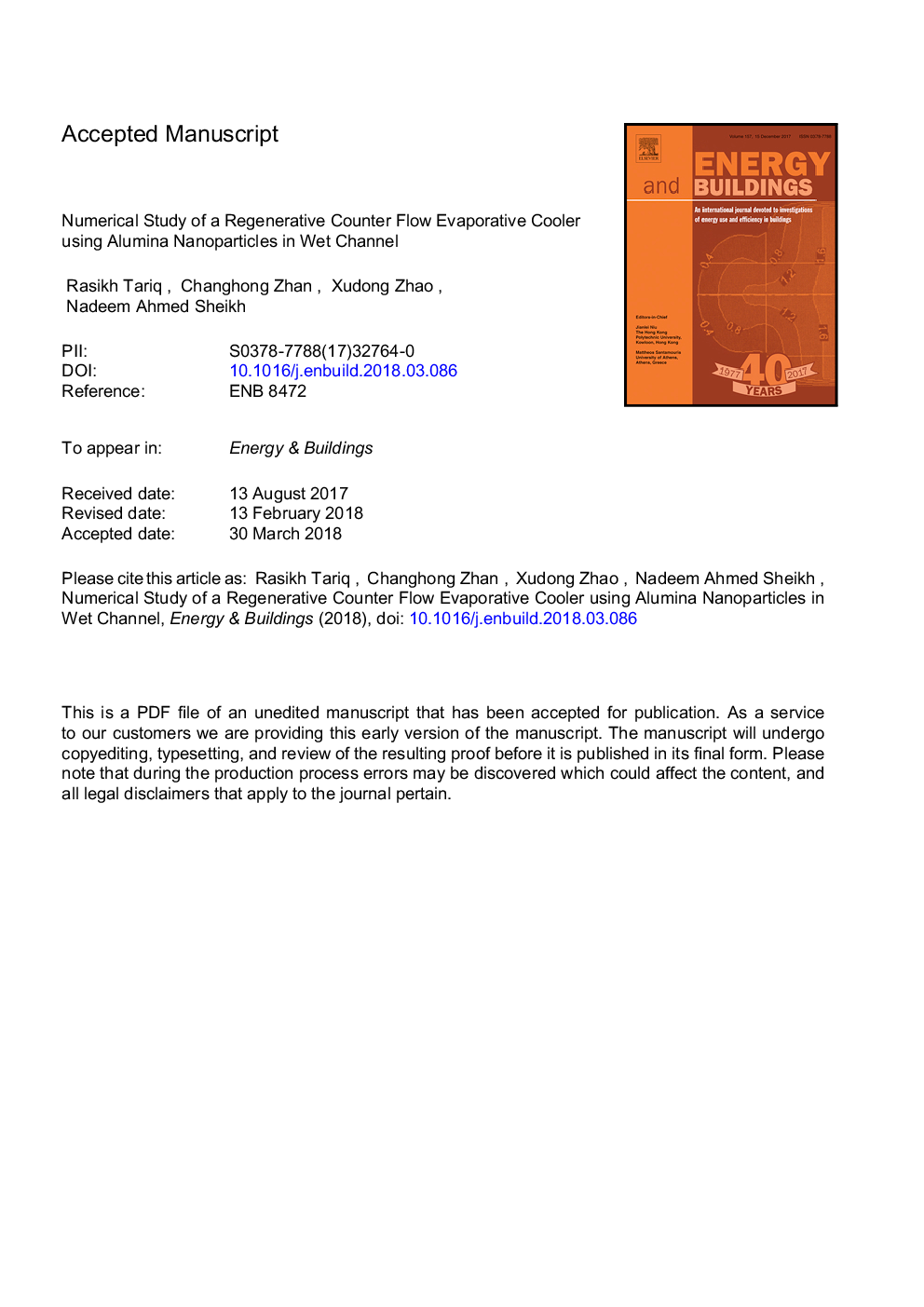| کد مقاله | کد نشریه | سال انتشار | مقاله انگلیسی | نسخه تمام متن |
|---|---|---|---|---|
| 6728198 | 1428921 | 2018 | 31 صفحه PDF | دانلود رایگان |
عنوان انگلیسی مقاله ISI
Numerical study of a regenerative counter flow evaporative cooler using alumina nanoparticles in wet channel
ترجمه فارسی عنوان
مطالعه عددی یک کولر تبخیری ضد جریان احیا کننده با استفاده از نانوذرات آلومینا در کانال مرطوب
دانلود مقاله + سفارش ترجمه
دانلود مقاله ISI انگلیسی
رایگان برای ایرانیان
کلمات کلیدی
موضوعات مرتبط
مهندسی و علوم پایه
مهندسی انرژی
انرژی های تجدید پذیر، توسعه پایدار و محیط زیست
چکیده انگلیسی
The use of Maisotsenko Cycle (M-Cycle) has enhanced the domain of evaporative cooling technologies to sub-wet bulb temperature cooling while ensuring moisture control. Several studies have demonstrated the use of cross-flow heat & mass exchanger (HMX) offers higher cooling capacity; however, it has lower cooling effectiveness and Energy Efficiency Ratio (EER). In contrast, a counter-flow (HMX) offers high cooling effectiveness with lower cooling capacity. In this paper, the performance of counter-flow HMX is enhanced by addition of alumina nanoparticles in feed water due to enhanced heat and mass transfer characteristics of nanofluids compared to original base fluid. Here, a mathematical model is formulated by incorporating the nanofluids in a selected control volume. The developed model is solved numerically on a discretized HMX length. Initially, the model is benchmarked against previously published results using water as base fluid. A comparison between HMX performance using water and alumina nanofluid is performed in terms of Performance Enhancement Ratio (PER). PER indicates 1-18% increase in cooling effectiveness, 18-43% increase in cooling capacity and 9-19% increase in EER by using alumina in water when working air temperature is increased from 20°C to 45°C. Similarly, an increase in PER is also observed by changing air velocity. Increase of 41% is observed in cooling capacity and 18% increase in EER is observed by changing particle volume fraction from 0 to 2%. This research identifies ways to reduce the carbon emissions of a building by increasing the energy efficiency of existing evaporative cooling technology using nanofluids.
ناشر
Database: Elsevier - ScienceDirect (ساینس دایرکت)
Journal: Energy and Buildings - Volume 169, 15 June 2018, Pages 430-443
Journal: Energy and Buildings - Volume 169, 15 June 2018, Pages 430-443
نویسندگان
Rasikh Tariq, Changhong Zhan, Xudong Zhao, Nadeem Ahmed Sheikh,
